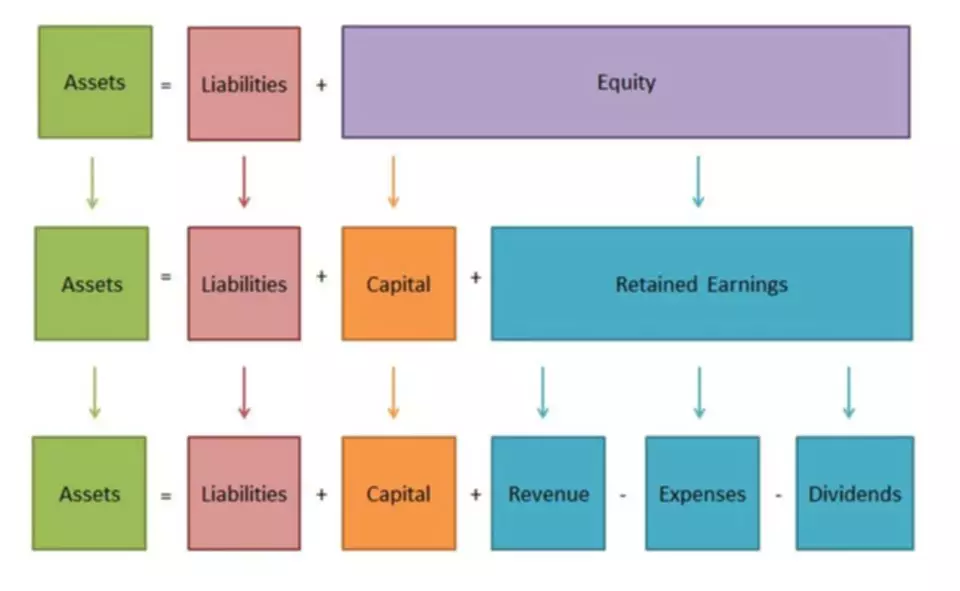Content

Brackets are adjusted annually for inflation, but 2022 inflation adjustments were not available as of publication. States tend to have flat tax rates because they’re believed to be simpler to administer and regulate, according to Davis. “These states often allow fewer deductions and write-offs than states with a progressive system,” he says.
- States tend to have flat tax rates because they’re believed to be simpler to administer and regulate, according to Davis.
- Timothy Vermeer is a Senior Policy Analyst with the Center for State Tax Policy at the Tax Foundation.
- But that’s not the only tax perk for residents of the Silver State.
- Incomes taxes are just one of the ways that state governments make revenues for operations – think things like building schools and repairing roads.
- Occasionally, .PDF files such as tax forms, worksheets, and instructions may not open automatically in your Internet browser.
- Formerly called the Unemployment Tax before being renamed in 2012, this tax is used to give partial, temporary income to workers who lose their jobs through no fault of their own, and who are able and available to work.
The disability must be permanent and must have been acquired as a result of the military service. The property tax will be discounted based on the highest state income tax rates percent of the disability. Total and Permanent Disability Exemptions are available for homeowners who have a total and permanent disability.
Corporate Income Tax
A portion of the property tax on rental property is passed through to renters in the form of higher rent — and these taxes represent a much larger share of income for poor families than for the wealthy. Ten jurisdictions with more equitable state and local tax systems can be found in Figure 5. Six of the ten — California, the District of Columbia, Delaware, Minnesota, New Jersey, and Vermont — had positive scores on ITEP’s Tax Inequality Index, meaning that their state and local tax systems do not worsen income inequality. Thoughtful, progressive tax policy decisions permitted these six jurisdictions to make their tax systems somewhat more equitable for those with the least ability to pay taxes. Seven of the 10 states do not levy a broad-based personal income tax — Florida, South Dakota, Nevada, Tennessee, Texas, Washington, and Wyoming.
- These include analogs to the federal Alternative Minimum Tax in 14 states, as well as measures for corporations not based on income, such as capital stock taxes imposed by many states.
- The Comptroller’s Office will no longer accept the federal Form 2848 or federal Form 8821 as power of attorney forms for Maryland tax purposes.
- She most recently worked at Duke University and is the owner of Peggy James, CPA, PLLC, serving small businesses, nonprofits, solopreneurs, freelancers, and individuals.
- Forty-three states impose a tax on the income of individuals, sometimes referred to as personal income tax.
- Or, they may decide instead to ask wealthier families to pay tax rates more commensurate with their incomes.
Another 10 U.S states have a flat tax rate—everyone pays the same percentage regardless of how much they earn. Tonya Moreno is a licensed CPA with about 15 years of diversified accounting, tax, and management experience. She is an expert in the field who has worked as a tax accountant for many large, multi-state corporations. She not only has experience in preparing state and federal tax returns, but has also dealt with complex tax issues with large amounts of money at stake. Today, Tonya serves as the chief financial officer of Maslonka Powerline Services in Spokane, Washington.
Personal income tax rates and tables
Moreover, excise taxes are typically based on volume rather than price — per gallon, per pack and so forth. Thus, better-off people pay the same absolute tax on an expensive premium beer as low-income families pay on a run-of-the-mill variety. As a result, excise taxes are usually the most regressive kind of tax. State personal income taxes with few deductions or exemptions to benefit the rich tend to be progressive. Targeted policy decisions to phasedown or phaseout these benefits for higher-income earners can improve both the progressivity and revenue yield of state income tax structures. All of the ten states with more equitable tax systems have refundable Earned Income Tax Credits; EITC’s in 7 of the 10 states exceed a quarter of the federal credit. Refundable credits to offset sales and property taxes are also common.
- Residents of New York state face the country’s highest tax burden, according to a new WalletHub study.
- In computing the deduction for depreciation, several states require different useful lives and methods be used by businesses.
- These federal policy changes are in place temporarily, through the end of 2025.
- Although mirroring formally came to an end with the Tax Reform Act of 1986, it remains the law as seen by the U.S. for Guam and the Northern Mariana Islands because conditions to its termination have not yet been met.
This results in a state-imposed total tax burden of 8.23% of personal income for Nevadans, the second-highest on this list. However, it still ranks a very respectable 22 out of 50 when compared with all states. Nevada relies heavily on revenue from high sales taxes on everything from groceries to clothes, sin taxes on alcohol and gambling, and taxes on casinos and hotels. Sales and excise taxes in Florida are above the national average, but the total tax burden is just 6.97%—the sixth-lowest in the country.
Property Tax Exemptions
The report includes the statewide general sales and use taxes levied by 45 states and the District of Columbia. The report also includes the local sales and use taxes currently levied by about two-thirds of the states. Where the base of these local taxes differs from the base of the state tax, the differences are reflected in our analysis. Twenty-nine states and the District of Columbia have enacted state Earned Income Tax Credits . Most states allow taxpayers to calculate their EITC as a percentage of the federal credit.

Seven states offer an income tax credit to help offset the sales and excise taxes that low-income families pay. Some of the credits are specifically intended to offset the impact of sales taxes on groceries. These credits are normally a flat dollar amount for each family member and are available only to taxpayers with income below a certain threshold. They are usually administered on state income tax forms and are refundable — meaning that the full credit is given even if it exceeds the amount of income tax a claimant owes. State and local governments maintain roads, run schools and pay police, and they need to fund public functions and state infrastructure.
Personal Income Tax Rates for Tax Year Beginning January 1, 2022
As a 501 nonprofit, we depend on the generosity of individuals like you. Help us continue our work by making a tax-deductible gift today. Seven U.S. states charge no tax on earned income at all. Lea has worked with hundreds of federal individual and expat tax clients. All features, services, support, prices, offers, terms and conditions are subject to change without notice. Although taxes may not be the first thing you consider when deciding where to live, knowing the tax situations of the locations you’re considering for a move could help you save in the long-run, especially when retiring. Need to figure out your Capital Gains Tax liability on a sale of an asset?
That’s because your tax burden — individual income, property, sales and excise taxes as a share of total personal income — varies by state. Any such amount will have a tax rate of 5 percent instead of 3 percent. Any such amount of Connecticut taxable income to which, as provided in the preceding sentence, the 3 percent tax rate does not apply shall be an amount to which the 5 percent tax rate shall apply. The argument for graduated tax rates is that they’re tied to your income so those who earn more pay more.
Total Tax Burden: 8.23%
The Capital Gains Tax Calculator is designed to provide you an estimate on the cap gains tax owed after selling an asset or property. Please consult the appropriate professional regarding your individual circumstance. If a taxpayer calls and their representative is present the taxpayer can give permission for the representative to speak to us at that time. However, the approval is for that phone call at that time only. If the power of attorney form does not include all the information as instructed it will not be accepted.
- Ohio’s personal and dependent exemptions are $2,400 for an AGI of $40,000 or less, $2,150 if AGI is more than $40,000 but less than or equal to $80,000, and $1,900 if AGI is greater than $80,000.
- That’s slightly below the national median property tax for a home costing that much.
- Top marginal rates range from North Dakota’s 2.9 percent to California’s 13.3 percent.
- In fact, when all state and local taxes are tallied, Washington’s poor families pay 17.8 percent of their income in state and local taxes.
- He has a bachelor’s from Ohio University and Master’s from Wright State University in music education.
- Alaska has no statewide sales tax, but it allows cities and towns to levy sales taxes.
If you’re thinking about changing jobs and moving to a different state, you could save big bucks by relocating to one of these states where the tax bite is light for middle-class families. Line balance must be paid down to zero by February 15 each year. Year-round access may require an Emerald Savings® account. Enrolled Agents do not provide legal representation; signed Power of Attorney required.
Comment (0)